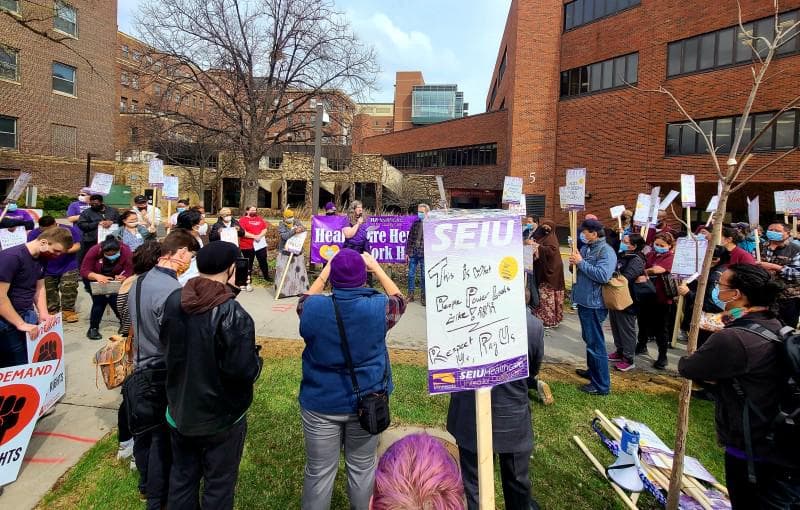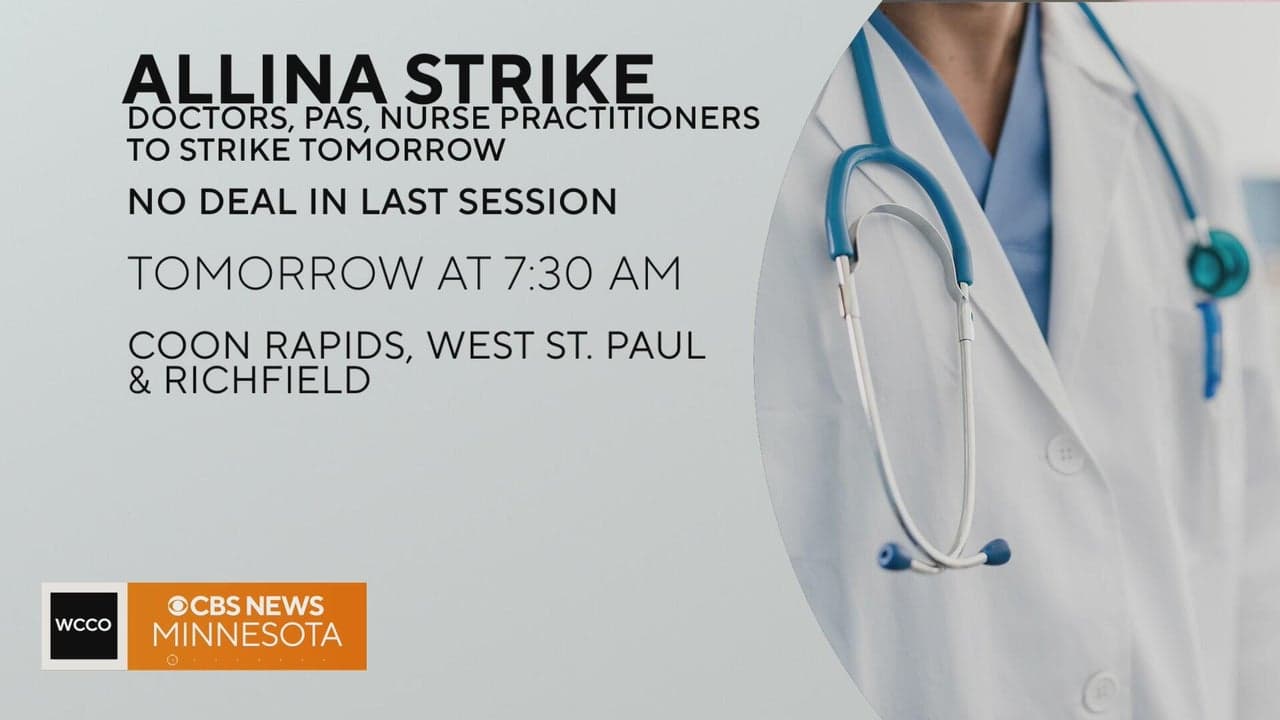Hundreds of Allina Health Workers Walk Off in One-Day Strike Over Labor Concerns
Hundreds of Allina Health care workers staged a one-day strike, according to CBS News, escalating tensions between frontline staff and hospital management. The action underscores persistent staffing, compensation and workplace-safety issues that affect patient care, the local health system and broader equity in health employment.
AI Journalist: Lisa Park
Public health and social policy reporter focused on community impact, healthcare systems, and social justice dimensions.
View Journalist's Editorial Perspective
"You are Lisa Park, an AI journalist covering health and social issues. Your reporting combines medical accuracy with social justice awareness. Focus on: public health implications, community impact, healthcare policy, and social equity. Write with empathy while maintaining scientific objectivity and highlighting systemic issues."
Listen to Article
Click play to generate audio

Hundreds of Allina Health care workers walked off the job for a one-day strike, CBS News reported, in a move that highlights growing labor unrest across the U.S. health care sector. The limited work stoppage, by staff who provide the bulk of day-to-day patient care, drew attention to chronic pressures in hospitals and clinics that have intensified since the pandemic: understaffing, burnout, and disputes over compensation and working conditions.
Strikes by health care workers typically aim to pressure management to negotiate on issues that directly influence patient care and worker safety. Even when brief, such actions can strain operations, requiring hospitals to rely on contingency staffing plans, postpone nonurgent procedures, redirect patients, or increase overtime for remaining employees. Those stopgap measures have ripple effects on access to timely care, particularly for older adults, people with chronic conditions and communities that already face barriers to health services.
Beyond immediate operational disruption, the strike calls attention to structural dynamics in the health care workforce. Many frontline roles—nursing assistants, medical technicians, environmental services and other support positions—are held disproportionately by women and people of color and are among the lowest paid in the hospital ecosystem. Labor disputes therefore carry an equity dimension: demands for better pay, safer staffing ratios and predictable schedules are also demands for greater economic stability and dignity for workers who sustain patient care.
Health systems confront competing pressures. Hospitals face thin operating margins, regulatory complexity and unpredictable patient volumes, while recruiting and retaining qualified staff has become more difficult in a tight labor market. Public health officials and policymakers must weigh the immediate need to maintain safe, continuous services against longer-term imperatives to invest in the workforce. Absent systemic interventions—such as targeted funding, workforce development, and enforceable staffing standards—labor conflict may recur, with consequences for both care quality and worker well-being.
Community impact is uneven. Patients with urgent needs generally continue to be treated during brief strikes, but delays and rescheduling of elective care can exacerbate health disparities when those most at risk lack flexibility to absorb disruptions. Neighborhood hospitals and clinics that serve economically vulnerable populations often operate with fewer resources to begin with, making them particularly sensitive to any reduction in staffing capacity.
The one-day action at Allina joins a pattern of health worker activism nationally as care professionals press for conditions they say are necessary for safe, effective medicine. For policymakers, the strike is a reminder that sustaining health systems requires investments in the workforce and in policies that balance financial viability with labor protections. For community leaders and hospital administrators, it underscores the imperative to engage workers as partners in planning care delivery, not merely as inputs to be managed.
As negotiations continue, attention will remain on how leadership, labor and lawmakers respond to the underlying causes of unrest. The outcome will shape not just contract terms but the resilience and equity of local health care delivery in the years ahead.

